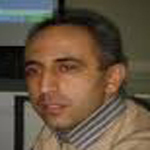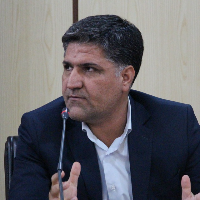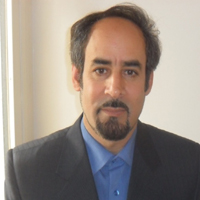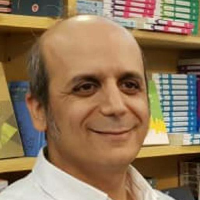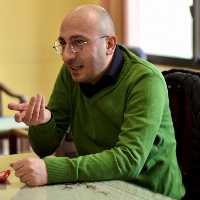مقالات رزومه دکتر محمد رضایی
-
برآمدن تکنوکرات ها پس از کودتای 28 مرداد نشان گر انتقالی از ملی گرایی سیاسی حول جنبش ملی کردن نفت به شکل جدیدی از ملی گرایی اقتصادی بود. این گذار بیش از همه به سبب تحولات اقتصادی-سیاسی جهانی پس از جنگ دوم بین الملل رخ داد و وامدار فهم جدیدی از مفهوم اقتصاد بود که در برنامه های توسعه جهان سوم به کار افتاد و خبرگان تکنوکرات را به عنوان بازیگرانی کلیدی وارد موضوع حکمرانی کرد. حرکت ایران به سوی توسعه در وضعیت «عقب مانده» اقتصادی و اجتماعی به جا مانده از جنگ آغاز شد. دولت ملی گرای مصدق به دنبال پس گیری حق حاکمیت ملی و دریافت درآمدهای بیشتر نفتی برای غلبه بر این اوضاع و به پیشتوانه جنبش های مردمی وارد مجادله ای سیاسی با دولت بریتانیا شد. این درگیری سرانجام با کودتای آمریکا/بریتانیایی به سرنگونی دولت مصدق انجامید. باری، موازی با جنبش سیاسی مصدق، گروهی از تکنوکرات ها به رهبری ابوالحسن ابتهاج با چشم اندازی متفاوت وارد دم ودستگاه دولت شدند. آن ها باور داشتند درآمدهای نفتی برای خروج از عقب ماندگی بایستی مبتنی بر رشد اقتصادی و برنامه ریزی توسعه باشد و به این منظور نیاز به دریافت کمک های مالی و فنی از سازمان های بین المللی توسعه است. تثبیت این نگرش به معنای آغاز فرمانروایی ملی گرایی اقتصادی در ایران بود که از 1332 چراغ راه هدایت اقتصادی و عمرانی ایران شد. این تحلیل تاریخی بر بزنگاهی متمرکز است که تعامل عوامل فنی-سیاسی مسیر سلطه یافتن خبرگان بر فرآیند توسعه با محوریت برنامه ریزی دولتی در ایران را شکل دادند و فهمی دقیق تر از چگونگی تحول گسترده اقتصادی-اجتماعی ایران که منجر به شکل گیری یک چهره جدید از جامعه ایران، از دهه 1330 به بعد، به دست می دهد.
کلید واژگان: ملی گرایی اقتصادی, سازمان برنامه, توسعه, برنامه ریزی اقتصادی, خبرگان}The emergence of technocrats following the 1953 coup d'état signified a transition from political nationalism centered around the nationalization of oil to a new form of economic nationalism. This shift was primarily driven by the global economic and political transformations after World War II, which introduced a new understanding of the concept of "the economy" and positioned technocrats as key actors in governance. Iran's move towards development began in the context of its economic and social backwardness left by the war. Prime Minister Mossadegh's nationalist government sought to regain national sovereignty and secure increased oil revenues to overcome these conditions, leading to a political confrontation with the British government. This confrontation eventually culminated in the U.S.-British-backed coup d'état against Mossadegh's government. In parallel to Mossadegh's political movement, a group of technocrats led by Abolhasan Ebtehaj entered the government with a different vision. They believed that oil revenues should be based on economic growth and development planning, requiring financial and technical assistance from international development organizations. Consolidating this approach marked the beginning of economic nationalism in Iran, with the Plan Organization becoming the guiding force for Iran's economic and infrastructure development since 1953. This historical analysis focuses on the concentrated interplay of technical and political factors that shaped the ascendance of technocrats and the role of state planning in Iran's extensive socio-economic transformation from the 1950s onwards, providing a deeper understanding of the process.
Keywords: Economic Nationalism, Plan Organization, development, Economic Planning, experts} -
پس از انقلاب اسلامی، یکی از حوزه هایی که در ساحت فرهنگی دچار تحول جدی شد، نهاد سینما بود. سینما از آغاز انقلاب چونان ابزاری فرهنگی مورد توجه شایان بوده تا از آن به عنوان وسیله ای برای ترویج دین استفاده گردد. در این پژوهش با مطالعه 44 نمونه از آثار سینمای دینی پس از انقلاب با روش تحلیل گفتمان و نشانه شناسی گفتمانی تلاش شده است تا به این سوالات پاسخ داده شود که گفتمان های سینمای دینی پس از انقلاب کدام اند و چه صورت بندی و زمینه مندی گفتمانی دارند. نتایج این مطالعه نشان می دهد پس از انقلاب اسلامی متون سینمایی در گفتمان های پنج گانه ی انقلاب اسلامی و دفاع مقدس، شهرگریزی و روستاگرایی، فردیت خواهی، تساهل و تکثرگرایی و بازگشت جای می گیرند. این گفتمان ها به ترتیب سوژه مطلوب خود با عنوان سوژه قدسی انقلابی، مکان معنا، فردیت خواه، تساهل گرا و مومن مصلح مکلف را آفریده اند. نتایج این مطالعه همچنین موید آن است که ستیز های معنایی گفتمان دینداری تساهل و تکثرگرا و گفتمان فردیت خواهی با گفتمان انقلاب اسلامی و دفاع مقدس و گفتمان بازگشت، محسوس و هویدا است. همچنین بین گفتمان انقلاب اسلامی و دفاع مقدس، شهرگریزی و روستاگرایی و بازگشت همپوشانی هایی از حیث دال های مشترک موجود است.
کلید واژگان: گفتمان, سینمای دینی, گفتمان انقلاب اسلامی و دفاع مقدس, گفتمان شهرگریزی و روستاگرایی, گفتمان فردیت محور, گفتمان تساهل و تکثرگرایی و گفتمان بازگشت}Strategy for Culture, Volume:12 Issue: 48, 2020, PP 101 -145In this study, with the study of the forty four sample of the works of religious cinema after the revolution with the method of discourse analysis and discursive semantics, it has been tried to answer the following questions: what are the discourses of religious cinema after the revolution and what they have in discourse formulation and context. The results of this study show that, after the Islamic Revolution, cinematic texts have been found in five discourses of the Islamic Revolution, Sacred Defense, escaping urbanization and favoring life in villages, individuality, tolerance, pluralism and return. These discourses have, in turn, arranged their ideal and normal object as the sacredly revolutionary subject, the place of meaning, individualist, tolerant, and responsible truthful believer. The results of this study also confirm that semantic conflicts of tolerant religious discourse and the discourse of individualism with the discourse of the Islamic Revolution as well as the Sacred Defense and the discourse of return are tangible. Moreover, there are some overlaps regarding common denominators between the discourses of the Islamic Revolution and the Sacred Defense, urbanization and favoring life in village as well as the return. In the discourse of religious cinema, we do not see plurality of subjects and they have a limited space for functionality. Subjects' functionality is also continually attacked by structural forces.
-
موضوع این مقاله مطالعه جامعهشناختی مدارای سیاسی در ایران است. دستگاه نظری پژوهش بر تیوری های پاول وگت در تحلیل مدارای سیاسی و نقش آموزش در آن و آنتونی گیدنز در تحلیل نقش جهانیشدن و رسانه های جدید در تغییرات سیاسی و فرهنگی، استوار است. نوع تحقیق کمی و بر مبنای پیمایش اجتماعی است. حجم نمونه 811 نفر و شیوه نمونه گیری، نمونه گیری طبقه بندی شده تناسبی (برحسب جنس) و در مراحل نهایی نمونه گیری تصادفی ساده و سیستماتیک است. شواهده تجربی پژوهش دلالت بر بالابودن میزان گرایش به مدارای سیاسی در جامعه نمونه دارد. به استناد یافته های تجربی پژوهش میتوان داوری کرد که گزاره های مشاهده ای، صدق راه حل های بیان شده در پژوهش مبنی بر رابطه میزان مصرف رسانه های نوین با میزان مدارای سیاسی را تایید میکند. چنانکه تابع رگرسیون استاندارد دلالت براین دارد که که سهم شاخص مصرف رسانه های نوین در تبیین شاخص مدارای سیاسی 38 واحد بیشتر از شاخص تجربه آموزشهای نوین است. همچنین نسبتی از واریانس متغیر مدارای سیاسی که از ترکیب خطی دو متغیر تجربه آموزشی نوین و مصرف رسانه های نوین تبیین میگردد به اندازه 37 درصد است.
کلید واژگان: مدارای سیاسی, تجربه آموزشهای نوین, مصرف رسانه های نوین, پیمایش اجتماعی, تحلیل رگرسیون, تحلیل مسیر}The subject of this article is the sociological study of political tolerance in Iran. The theoretical model of the research are based on the theories of Paul Wagt in his analysis of political tolerance and the role of education in it, and Anthony Giddens in his analysis of the role of globalization and the new media in political and cultural change. The type of research is quantitative and based on social survey. The sample size is 811 people and the sampling method is proportional classification sampling (by gender) and in the final stages it is a simple and systematic random sampling. Experimental evidence from research indicates an increase in the tendency to political tolerance in exemplary society. Based on the experimental findings of the research, it can be judged that the observational statements confirm the validity of the solutions expressed in the research regarding the relationship between the consumption of new media and the level of political tolerance. As the standard regression function implies, the contribution of the New Media Consumption Index to the explanation of the Political Tolerance Index is 38units higher than that of the New Education Experience Index. Also, the ratio of the variance of the political tolerance variable, which is explained by the linear combination of the two variables of modern educational experience and the consumption of new media is 37%.
Keywords: Political tolerance, Consumption of new media, Social Survey, Regression analysis, Path analysis} -
انقلاب فرهنگی بیشتر به یکی از نتایج ناگزیر انقلاب اسلامی فروکاسته شده و پیامد تحمیل اراده ی حاکمیت بر نظم دانشگاهی دانسته شده است. حال آنکه چیستی این رخداد تنها با درنظرگرفتن شرایطی که آن را امکان پذیر کردند، ارتباطش با جامعه و توصیف فربه ی رخدادهای گوناگون قابل درک است. افزون بر این، مشکل اصلی پژوهش های موجود این است که بر لحظه ی پدیداری انقلاب فرهنگی تمرکز دارند. از این رو، در این مقاله، کوشش شد با تکیه بر تحلیل هم آیند توصیفی عمیق تر ارایه شود، و سپس به این موضوع مهم پرداخته شود، چگونه انقلاب فرهنگی به امری پروبلماتیک در سال های پس از انقلاب بدل شد. با تکیه بر تحلیل تاریخی مجموعه عوامل هم آیند، سه اپیزود پیدایی، نهادینگی، و بازگشایی دانشگاه ها شناسایی شدند. افزون بر این، مجموعه ای از رویدادها ردیابی شدند، از قدرت یافتن اسلام گرایان، ضعف دولت، تسخیر سفارت آمریکا، و ناآرامی های مرزی تا پاکسازی های گسترده، انتخابات نخستین مجلس، و بمب گذاری ها (در دفتر حزب جمهوری اسلامی و ساختمان نخست وزیری)، که در مرحله پیدایش اثرگذار بودند. وانگهی مجموعه رخدادهای درهم تنیده ای در متن مقاله گزارش شدند، مانند: ویژگی دانشگاه پساانقلابی، گستره ی انقلاب فرهنگی، و مسئله ی مقام مسیول در حوادث دانشگاه. توضیح همه ی این فرآیندها نشان می دهد چگونه چهره ی تازه ای از اداره ی جامعه در سال های پس از انقلاب ذیل پروبلماتیک فرهنگ ممکن شد. در این مقاله به هم آمیزی مولفه های گوناگون این پروبلماتیک یعنی برآمدن عقلانیت دینی، نهادهای متمایز، تکنیک ها و رویه های تازه ای برای اداره جامعه جایگزین شیوه های پیشین و از این مهم تر، توصیفی ژرف از کشمکش های نیروهای گوناگون پرداخته شد
کلید واژگان: انقلاب فرهنگی, مفصل بندی نیروها, تحلیل همایندی, سیاست فرهنگ در ایران, مسئله علوم انسانی}Cultural revolution in Iran has been usually represented as an inescapable consequence of 1979 revolution, which imposed by government’s will to suppress the opponents and stabilize new order. Such descriptions lack the conditions and disputes out of which the event emerged. In this article, we contend that making sense of cultural revolution requires a more effective illustration through understanding the historical conditions, its relation with society and a thick description of the events. Moreover, based on conjunctural analysis, we argue that the whole procedure of the event can be analyzed in three episodes: the emergence, institutionalization, and re-opening of the universities. It seems that a series of events had an active hand in the processes including the rise of Islamists, the state’s weakness, the hostage crisis, the border unrests, the widespread clearings, the election of the first parliament, and the bombing of the offices of Islamic Republic Party and the prime minister. Furthermore, several critical issues initiate the event, including its scope and extension, the feature of post- revolutionary university, and the responsive authorities. In addition, the problem of academic order contributed in the period of institutionalization and establishing the Bureau of the Cultural Revolution. The last but not the least problem formed around reopening of humanities in universities. We argued the articulation of events and problems led to problematization of cultural revolution. Also this articulation illustrates the beginnings of ideological cultural politics in post-revolutionary Iran.
Keywords: cultural revolution, articulation of forces, conjunctural analysis, cultural politics in Iran, the problem of human sciences} -
مقاله حاضر به مسئله چگونگی وضعیت قوانین در دانشگاه می پردازد. بعد انقلاب فرهنگی در سال 1359 و بسته شدن دانشگاه به مدت دو سال، شورای انقلاب فرهنگی در قالب نهاد سامان بخش به وضعیت قوانین دانشگاه، در کنار دیگر وظایفی که دارد، شناخته شد. شورای عالی انقلاب فرهنگی، نهادی است که به موازات مجلس دارای حق قانون گذاری در حوزه های مانند دانشگاه است که وزارت علوم مسئول اجرای قوانین است، اما شورای انتصابی عالی انقلاب فرهنگی، به گونه ای قوانین را وضع می کند که دارای کلی گویی، ابهام و تفسیرپذیرند که سبب می شوند تا مسئولان دانشگاه با سلیقه زدگی قوانین را تفسیر و اجرا کنند، بنابراین در پژوهش حاضر، به دنبال پاسخ به این پرسش هستیم که وضعیت قوانین در دانشگاه چگونه است؟ و تجربه دانشجویان با آن چگونه است؟ برای این منظور، در چهار دانشگاه با گرایش های هنر، فنی، علوم اجتماعی با 50 دانشجو متشکل از فعال صنفی و سیاسی و غیرفعال و همچنین با 5 حقوقدان و آشنا با مسائل حقوقی و قانونی دانشگاهها مصاحبه به عمل آمده است. بر اساس نتیجه گیری، وضعیت اجرای قوانین در دانشگاه، دارای سلیقه زدگی است؛ این مسئله در منافات با ذات کارکرد قوانین است که در پی زدودن سلیقه زدگی در انجام امورند. به همین سبب، دانشجویان وقتی با چنین سطح وسیعی از سلیقه زدگی و بی عدالتی در اجرای قوانین دانشگاه روبه رو می شوند، دچار بیگانگی از فضای دانشگاه می شوند و بنابراین از مهم ترین یافتههای نظری/مفهومی، این است که قوانین در مرحله وضع و نصب با منطق ایدئولوژیک زمان پیروزی انقلاب اسلامی قادر به درک منطق امروزی زندگی دانشجویی نیست.کلید واژگان: قانون, دانشجو, دانشگاه, زیست دانشجویی, تخلف, شورای عالی انقلاب فرهنگی}This article is about the condition of law at universities. After the Cultural Revolution, in 1980, and closing university for Two years, the Supreme Council of the Cultural Revolution became known as the governmental institute to legislate laws of the university. This supreme council is parallel to the Iranian parliament and it has the right to legislate in some fields such as the university that the Ministry of Science, Research and Technology is responsible to enforce laws. But, the Supreme Council of the Cultural Revolution legislates laws are ambiguous, interpretable and generalized. These features have caused university officials to enforce laws based on their own interpretation and manner. Thus, we are looking for answering the question of “how is the condition of laws in Iran universities?, and how do students experience them?” For this reason, at four universities in the fields of art and human sciences and engineering, we interviewed 50 students, and also with 5 lawyers who are familiar with legal issues at the university. In result, the enforcement of laws at universities is with university officials’ manners and this is on the contrary to the function of laws to eliminate the abuse of power. Therefore, this vast injustice and misuse of laws alienate student from university, and then the most important theoretical and conceptual findings are that the university is based on the reason of the ideologies at the beginning time of Islamic revolution. Thus they are not compatible with the current students’ life.Keywords: law, student, university, transgression, supreme council of cultural revolution}
-
پژوهش ها درباره پیدایش مدارس جدید در ایران را می توان در سه دسته کلی تحلیل های نوسازی، تحلیل های دولت گرا و تحلیل های ضداستعماری تقسیم بندی کرد. به طور کلی سه نقد بر این تحلیل ها وارد است: پروژه ای دیدن ظهور مدارس جدید در ایران، تقلیل گرایی و ساده سازی. این تحلیل ها با نادیده گرفتن جزییات تاریخی و پیچیدگی هایی که در گذشته تاریخی ایرانیان رخ داده است روایتی ساده از ظهور مدارس در ایران ارائه می کنند. در مقابل باید به دنبال آشکارسازی پیچیدگی ها و ضرورت های تاریخی بود که از دل آن ها تولد مدرسه جدید ممکن شده است. به نظر ما به رغم اهمیت نقش نیروهای سه گانه پیش گفته در تکوین و گسترش مدرسه در ایران، این رخداد تاریخی را باید در متن گسترده تر تحول گفتمانی حول مفهوم تربیت جدید توضیح داد. ظهور مدرسه بیش از آن که حاصل نیروی یرونی و سوژه ای بنیان گذار باشد، حاصل ضرورت هایی بود که به طور تاریخی سربرآورده بودند، وقایعی که رخ داده بودند و نیروهای جدیدی که شکل گرفته بودند تا تربیت مدرسه ای را در ایران ممکن سازند. تربیت دولت، تربیت قشون و فنون و تربیت ملت سه برهه مهم پیدایش این گفتمان هستند که در این مقاله کوشیدیم با جزئیات بیشتری ابعاد آن را با تکیه بر تحلیل هم آیندی روشن کنیم.کلید واژگان: تحلیل هم آیندی, تربیت دولت, تربیت ملت, آموزش مدرسه ای, مدرسه های جدید, قاجار}It is possible to cast studies on the formation of new schools in Iran into three categories: modernization, state-oriented, and anti-colonialist approaches. All these analyses, in general, are flawed, mainly due to reductionism, simplification of causes, or subject-oriented analysis. In these researches, historical complexities and details, usually, to be lacked, and in turn, a simplified explanation is rendered as the main factor of the emergence of new school in Iran. In looking for a more complicated narrative, we try to illustrate some effective forces through which the birth of new school has made possible. Although we never deny the importance of historical factors which are at the center of previous investigations, we content that new birth requires focus on a more broad discursive transformation in which the necessity for new education, not only by the state but also by the other part of society, is distinguished. Therefore, the birth of new school, in contest with the long-lasting religious and traditional Maktabs, cannot be analyzed by appealing to a final historical subject like the intelligentsia, Qajar state or Christian missioners, but historical necessities and new arrangement of historical forces. Cultivation of state (or Shah), mobilization of army and technologies, and finally, education of the nation, are three important elements in the course of this discourse. Based on a conjunctural analysis, in this article, we tried to shed light on the issue.Keywords: conjunctural analysis, cultivation of state, education of the nation, Iran, Maktab, mobilization of army, modern schooling, modernization, Qajar}
-
با مروری بر مباحث روش شناختی موجود در مطالعات فرهنگی مشخص می شود که نوعی دوآلیسم نظریه/ روش همچنان در این مباحث جاری است. تاکید ویژه بر کیفی بودن پژوهش های مطالعات فرهنگی نمی تواند راه کاری بایسته جهت فراروی از این دوآلیسم باشد؛ بنابراین دامن زدن به جدال کمی/ کیفی که در مباحث روش شناختی مطالعات فرهنگی به ویژه در ایران بسیار دیده شده است، نمی تواند چندان راه گشا باشد. نگارندگان این مقاله با طرح مجادلات دوآلیستی در روش شناسی جامعه شناسی و مطالعات فرهنگی می کوشند با توجه به سیاست نظریه و روش در مطالعات فرهنگی، روی کردی تحلیلی معرفی کنند که به جای باقی ماندن در سطح مجادلات دوآلیستی، راهی به فراسوی آن بگشایند. این روی کرد که به تحلیل هم آیندی شهره است، در مقاله حاضر به تفصیل معرفی شده، تبارهای مفهومی آن نزد ماکیاولی، مارکس، لنین، گرامشی و آلتوسر مرور، و سپس ملاحظاتی درباره کاربست های آن در مطالعات فرهنگی مطرح شده است. این ملاحظات بیشتر ناظر بر رابطه این فراروی از دوآلیسم نظریه/ روش با امکان تحقق مطالعات فرهنگی به مثابه دانشی مداخله گر، زمینه مند و دارای حساسیت های تاریخی است.
کلید واژگان: تحلیل هم آیندی, مطالعات فرهنگی, زمینه مندی, مداخله گری سیاسی, دوآلیسم نظریه, روش, مفصل بندی, فروبستگی خودسرانه, انحراف نظریه ای}By reviewing the current methodological topics in cultural studies، yet some kinds of theory/method dualisms are distinguishable. Going beyond these dualisms، requires emphasizing the importance of qualitative researches in cultural studies. In this article، we try to discuss the problem، which is focused on the dualistic contentions in the methodology of sociology and cultural studies. Next، with respect to the politics of theory and politics of method in cultural studies، we try to introduce an analytical approach، which helps us out to move beyond these dualistic quarrels. This analytical approach is well-known as “conjunctural analysis”. In this article، after detailed presenting this approach، and its conceptual origins that developed by Machiavelli، Marx، Lenin، Gramsci and Althusser، we argue how this approach can be applied in cultural studies. This argument reminds us that there is an intensive relationship between decentering method/theory dualism and possibilities of a cultural study as interventionist and contextual knowledge that is sensitive to history.Keywords: Conjunctural analysis, Cultural studies, Contextualism, Political intervention, Theory, method dualism, Articulation} -
در این مقاله سعی کردیم خوانش زنان ایرانی از سریال پربینند? ویکتوریا را بررسی کنیم. بر اساس نظریه های مخاطب فعال، به ویژه مصرف بین فرهنگی، مصرف رسانه ای با تکیه بر زمین? فرهنگی و اجتماعی، مخاطب به نحوی چندجانبه تعیین می شود. این تحقیق با روش کیفی و تکنیک مصاحبه عمیق، در میان30 نفر از زنان صورت گرفته است. نتایج نشان می دهد که تماشای این سریال نوعی اشتیاق مفرطی را پدید آورده است که می توان از «پیدایش تماشاگری شیفته» سخن گفت. افزون براین، تماشاگران زن این سریال، نقش ویکتوریا (قهرمان زن داستان) را مقتدر و مستقل تعبیر کرده اند. نمایش زن مقتدر حس خوشایندی از تماشای این سریال را برای آن ها تداعی کرده است. یافته ها نشان دادند، همذات پنداری مکانیسم قدرتمندی در فرایند تماشای این سریال است. وضعیت واقعی زندگی زنان تماشاگر با متن تصویری، مقایسه و موضوع مجادله تماشاگران است. این فرایند سبب شده تا خوانشی فعالانه حول قضاوت ها و انتظارات از نقش زنانه براساس نمایش نقش ویکتوریا در این سریال شکل گیرد. تاهل، اشتغال و رشت? تحصیلی متغیرهایی هستند که در نوع چنین خوانش هایی موثر است. افزون بر این، ما در این مقاله استدلال می کنیم که «مقایسه ما و دیگری» وجه مسلط در خوانش ویکتوریا در بین زنان ایرانی است.
کلید واژگان: مصرف بین فرهنگی, سریال ویکتوریا, خوانش زنان, مخاطب فعال}In this article we examine how Iranian women put an interpretation on Victoria, a very popular satellite TV series on Farsi One channel. Based on Active Audience Theory especially Cross-cultural Consumption, audiences consume media texts in different manners. By using qualitative method and in depth interviews with 30 women, we try to show that watching Victoria series produces a kind of excessive enthusiasm that leads to the emergence of “Love of Watching” or “Watchophilia”. Moreover female audiences of this TV series interpret Victoria’s role (the heroine) as independent and assertive. Presenting an assertive woman filled the female audience with delight. Findings showed that having empathy with the heroine is a strong mechanism in watching TV series. Comparing real conditions of female viewers’ lives with visual text is subject to controversy among them. This process has led to the formation of an active reading around judgments about feminine roles and expectations from it based on show of Victoria’s role. Family, occupation and educational major are variables effective on this kind of reading. Moreover we will try to argue that “drawing comparisons between the viewers and the characters” is the dominant aspect in reading Victoria series among Iranian women -
مطالعه فرآیند بازنمایی در رسانه ها از حوزه های مهم پژوهشی در مطالعات فرهنگی است. ما در این مقاله، تحت تاثیر رویکرد برساخت گرایانه بازنمایی استوارت هال، اشکال بازنمایی رسانه ای قومیت را در مجموعه های تلویزیونی ایرانی بررسی می کنیم. برای این منظور، دو مجموعه اگه بابام زنده بودو آهوی ماه نهم را به شیوه ای کیفی تحلیل کرده ایم. پرسش اساسی ما حول عدالت بازنمایی قومیتی در شبکه های تلویزیون سامان یافته است. همچنین نقد دورنی بر اساس مقایسه اشکال بازنمیی قومیت ها، براساس مصوبات اهداف، محورها و اولویت ها و سیاست های تولید، تامین و پخش توجه کردیم. براساس نتایج، می توان داوری کرد که نمایش قومیت به نوعی رویه نابرابر و ناعادلانه در ترسیم گروه هایی از جامعه دلالت دارد. این نحوه مواجهه با نقش های قومیت، وضعیت مبهمی را به وجو می آورد که همه قومیت ها و اقلیت های جامعه را در قالب نقشی غیر جدی (حاشیه ای) و گاه منفی در معرض دید همگان قرار می دهد. در حاشیه بودن، حالات اظهاری و اشکل بیانی بازگیران قومیتی را محدود می کند و قیودی مضاعف پیش پای سوژه های اقلیت می نهد: سوژه هایی به منزله کسانی که در حوزه عمومی سخن می گویند.
کلید واژگان: اقلیت فرهنگی, _ بازنمایی, در حاشیه بودن, سیاست فرهنگی, قومیت}The study of the process of representation in media is one of the important research areas in cultural studies. This article explores the different forms of media representation of ethnicity in Iranian T.V series based on constructivist representation approach as developed by Stuart Hall. To this end, two series entitled “if my dad was alive”, “Deer of the ninth month” were analyzed in a qualitative manner. The main question is about fairness in representations ethnic groups in TV networks. Also, the authors compare the different forms of the representation of ethnicity and provide an internal critique, bearing in mind the objection, topics, priorities and policies related to production, procurement and broadcasting ratified to regulated T.V programs. According to findings, it could be said that the representation of ethnicity gives an unfair picture of certain groups. This approach created fuzziness in portraying minorities as groups having marginal and even negative roles in the society. Being marginalized, ethnic actors face limitations in expressing themselves. Therefore minorities subjects who speak in the public sphere encounter more serious restrictions.
- این فهرست شامل مطالبی از ایشان است که در سایت مگیران نمایه شده و توسط نویسنده تایید شدهاست.
- مگیران تنها مقالات مجلات ایرانی عضو خود را نمایه میکند. بدیهی است مقالات منتشر شده نگارنده/پژوهشگر در مجلات خارجی، همایشها و مجلاتی که با مگیران همکاری ندارند در این فهرست نیامدهاست.
- اسامی نویسندگان همکار در صورت عضویت در مگیران و تایید مقالات نمایش داده می شود.
